ARIS: FLUID SILHOUETTES
“For over 10 years I have not painted lettering anymore, even if sometimes I see in the shapes I now make the same structure that my pieces had. Almost like an unfinished graffiti, a shadow, a ghost.”
Aris is an Italian artist from Tuscany who works at the intersection of graphics, murals and train writing. He is known for his two-dimensional, graphic figures and silhouettes that integrate themselves into the environment, inhabit it and yet never seem truly tangible. Through his unique, sublimely appearing and almost weightless visual language, he has created an explicit unique position within the writing culture and can be considered one of the most important artists of a new form of alternative, unauthorized painting in public space.
The evolution of the letter
Aris origins go back to the 1990s, where he first came across graffiti – during a stay in Berlin: “I started to get passionate in graffiti when I was about 15 years old. I was living in a provincial town and in my area at that time there was still no one who was painting. I saw the first things during a trip to Berlin and I was very impressed. I thought it was a real shame that there was no such thing in the place where I lived. So I started doing the first writings; drawing or painting had never interested me much before”, the artist notes. His main focus was initially on tags with markers. According to his own statements, he filled entire notebooks to study the concatenation of letters among themselves. Since he didn’t have any fanzines or websites to learn from at the time, he regularly traveled to nearby cities to get inspiration from the tags of other writers. He explains: “In those years the main objectives for me and for my crew were to do a lot and well; the evolution of the letter and the search for style through experimentation were part of the game. This approach has remained similar over time and has led me to experiment various techniques and forms.”
Artistic emancipation
Even though belonging to a crew was central to Aris for a long time, an artistic emancipation nevertheless took place over the years. On the one hand, this can be attributed to his personal aversion to the rigid canon of rules of the writing culture; on the other hand, this development was nourished by a certain discomfort with the spray can. Thus, over time, he began to experiment with different materials and shapes. His letter compositions became more ‘impetuous’ and ‘punky’, until his writings slowly evolved into silhouettes. These 2-dimensional, silhouette-like figures that populate their surroundings like mythical creatures now form the central theme of the Italian artist. In the interview, the latter remarks: “I did not make a programmatic choice, basically two-dimensional graphic figures came out of my hands, not realistic or photorealistic images. This transformed the subjects; from people into ghosts, from animals to mythical subjects. And then it came naturally to me in particular to place them in abandoned places, dormant.” Even though Aris has not painted lettering for 10 years now, he sometimes still sees in his silhouettes a close relationship to his pieces of that time, at least on a structural level – “as if they [the silhouettes] were an unfinished graffiti, a shadow, a ghost.”
Full-length puppets and wallpaintings
Even though Aris works cannot be strictly classified into series, the artist nevertheless differentiates between the following phenomena: “[…] I consider all the graffiti production on passenger trains separate from the work on freight trains. Then there are the full-length puppets contextualized in an environment, or the more complex wallpaintings. Among the works on freight, white monochromes could be considered a recurring feature. I consider them linked and interconnected as the continuation of a story”, the artist notes.
As for his life-size figures, the artist is less interested in working on the street, in busy or highly visible places. Hidden areas and places are instead his preferred sphere of action. He explains: “[…] Many of my jobs are difficult to find, require research, exploration. I prefer abandoned areas, abandoned factories, metal tanks or old buildings, where – after being abandoned – nature is regaining the upper hand.” In the beginning, it was always particularly exciting for him to see what (unexpected) effect the encounter of his characters could cause in the special places. For him, they often seemed like inhabitants who populated these abandoned areas. And even his wallpaitings, which are tailored for a much wider audience, must always be understood in dependence or interaction with the surroundings, the existing infrastructure as well as the nature of the wall – whereby Aris always tries to keep in mind the people who come into contact with the murals in everyday life.
Aris, Life-size figures, Tuscany (IT), 2012 ©Aris Aris, Life-size figures, Berlin (DE), 2008 ©Aris Aris, Life-size figures, Berlin (DE), 2009 ©Aris Aris, Life-size figures, Berlin (DE), 2008 ©Aris Aris, Mural, Citybilder, Dresden (DE), 2012 ©Lucky Cat Aris, Mural, Vedo a Colori, Civitanova Marche (IT), 2014 ©Aris Aris, Mural, Borgo Universo, Aielli (IT), 2017 ©Aris Aris, Mural, Antimurals, Magdeburg (DE), 2015 ©Aris
This demonstrates that the adaptation and engagement with certain places, situations and atmospheres plays an important role in his work. Thus, during the painting process, there is always some kind of adaptation and interaction with the carrier medium. Aris explains: “Even when I have a precise idea to realize, there is always an adaptation and interaction with the surface and the materials. When I paint in the street the surfaces I work on are never neutral like a blank sheet or canvas. I can find irregularities, cracks, welds, plants, color changes, writings or logos. These backgrounds become part of the work. Not taking them into account would mean not considering the work as a whole.” And he continues: “When I modify and deform the composition to incorporate and mask something that I don’t want to appear, I’m making a compromise. Sometimes these irregularities [however] have been the starting point for the construction of new forms”, Aris remarks.
Train works
While long-distance passanger trains were Aris preferred (mobile) medium in the beginning, he nowadays works mainly on freight trains. “The idea of creating a work that will move to unknown destinations has always fascinated me, Aris tells. “As I said before, I was living in a provincial town and especially in the early years there was still no graffiti scene to deal with, the train was the way to show the work by coming into contact with larger cities without physically moving.” What he appreciates most about freight trains is the form, the large surfaces without interruptions, the materials steel and sheet metal, and the way they change over the years. These materials actively determine the painting process: “On freight it’s often the background that dictates the law. The various models have different colors and surfaces. In the past, I worked a lot on gray trains that fascinated me for the possibility of creating tone-on-tone works and that, due to the particular paint they are covered with, created a contrast between the gloss of the train and the opaque of the quartz paint. My shapes that recall shadows are involved even more in this illusion through the reflection of light.”
What in the case of Aris’ full-length puppets is the choice of location and the exploration that comes with it, is in the case of his train works probably the action itself as well as the (atmospheric) experience. He explains: “The exploration phase is very important. I believe that in graffiti also the location and the contest are part of the work.” And he continues: “As for the trains, […] the atmosphere of the place is more about the experience. The selection criterion is related to other factors such as the possibility to find a particular model, to reach the side well, to be between the rows or not. For example, it comes back very well when in front of the train I want to paint another container-carrying train model is parked, which I can use as a support base to work higher.”
Painting process
Regarding Aris’ working method, there is no paradigm, no fixed constant to which he aligns his actions. Rather, Aris likes to be guided by his intuition and improvises. He prefers fluid forms based on the interaction of background and subject, challenging a play of contrasts and symmetries. Sometimes he lets gestures guide him to new forms in this process. In these cases, he starts applying different colors and creating spots – at first almost randomly, until new forms and figures finally emerge. And even when everything is planned, sketches are made and color studies are conducted, there are variables that are difficult to control: “The fact of using water-based colors forces me to take more carefully into account the climate; not only the rain but also the humidity. Once after an action on a very wet night I happened to come back the next day to take a picture and the piece was completely gone”, Aris tells. This demonstrates that Aris – due to his choice of colors and materials and the associated technical aspects – has to be very well organized from a logistical point of view. In the interview, he talks about how the materials he chose years ago led him to simplify his visual worlds. “Since they are water colors and of flat color spread, I always have to wait for one tone to dry to then be able to move on to another. So when I have less time available I prefer to do monochrome. I can only do multi-colored works on very hot and dry days. In that case the paint dries in a few minutes and I can finish the job in less than an hour”, Aris explains. Similar to the climate and weather conditions, however, the artist is also influenced by the darkness of the night, to which he is often exposed in the course of his work. In very dark places, he therefore prefers to use colors that form a strong contrast to the surface on which he is working – white on rusty metal, for example. Yet white, monochrome works are currently his preferred form of expression anyway, because the white quartz color is also relevant to him on a symbolic level. He explains: “The images that inhabit these new surfaces, walls or trains, are created with the same substance and the same color that is usually used to cover them.”
Studio works
Aris studio works can never be thought of separately from the outdoor space. Rather, both paths – ‘street’ and studio – always fed each other. “At first, at home, I produced the sketches for the pieces and then, apart, a whole series of works with shapes and materials that I had not yet brought outdoors.” As a result, he often spends many hours alone in the studio – which, on the one hand, is like a ‘liberation strike’ freeing himself “from both the dogmas, the influences and the dynamics of the group.” On the other hand, this practice also demands a lot of discipline, stamina and the ability to be alone.
What is important to him in his studio works is above all a certain degree of innovation. Thus he uses the changed conditions of the interior space to constantly try out new things. “When I am asked to carry out works for interior spaces, museums or galleries, I try to design new things, things that I could not do outside and that give me a motivation to produce indoors. Among these researches, beyond the ten-year graphic activity (which I never stop using and which I need a lot to give shape to my ideas), I have combined various forms of experimentation, change of supports, change of materials and change of points of view.”
Since his works are generally very graphic, it was a logical conclusion for him to experiment with layering and carving in the interior, thought both additively and subtractively. The artist explains: “In a 2011 exhibition at the ‘Cantiere San Bernardo’ in Pisa I built large panels of transparent PVC on which the painting – shielding the transparency – created shapes and atmospheres. Or both on PVC and on paper I created designs that, once perforated, entered into a relationship with other underlying designs and perforations. I began this research in Berlin where the daily relationship with new technical materials intrigued and stimulated me.” And the site-specific work he produced for the exhibition “Aber du siehst mich nicht / Unorte & Umwege” in Herne was also part of this research, Aris explains.
This brings to mind that he is generally very keen to always expand his own horizons. So he draws inspiration not only from art, but often from other disciplines and genres as well. In the interview, he talks about how he worked in the theater for a while, where he was responsible for transforming everyday objects, such as various pieces of furniture, into stage equipment. And he also worked in a self-managed space in Florence, ‘the Elettro +’, benefiting from the creative working atmosphere of various artists.
The decisive indecision
In conclusion, it is important to note: Aris can be considered one of the most independent and relevant artists of alternative, unauthorized painting in public space and has created an explicit unique position within this niche. The interesting thing about his works is, above all, that they can in no way be thought of as detached from the material support and its background condition. Rather they only emerge from their relationship to the background. His silhouette-like figures and fluid bodies are thus in no way driven by the desire to break through their support materials – quite the contrary. Rather, his pictorial worlds only take shape in dialogue with the background and are in a permanent process of negotiation with it. They spread out fluidly and move towards an ambiguous conclusion, thus retreating immediate recognition or understanding (cf. Fousion Gallery). In this way, they remain in an intermediate state: the decisive indecision.
Where Aris gets his inspiration from, he himself cannot really identify. Possibly it is an interplay of artistry, situational sensitivity, and an irrepressible spirit of experimentation and exploration. He himself describes this in the following words: “[…] I do not know if it is the space that shapes the thinking or or vice versa the newborn shape that shapes the space. There is probably an osmotic relationship, in which, after various tests and repetitions, an element of novelty is inserted (a color, a texture, a material, a new subject) that must become part of the previous cosmogony. I continue like this until everything is united, amalgamated, somehow resolved. And when peace reigns again, I feel the need to insert a new revitalizing element.”
When asked what can be expected in terms of innovation in the coming years with regard to graffiti in general, Aris names three points: One thing that fascinates him very much is that of anamorphosis where shapes play with architecture, as in Peeta’s work, for example. Furthermore, he mentions the potential of stylistic changes, through the alteration of techniques; when, for example, lettering is adhered, but the spray can is substituted. As a third and last point, he mentions the influences of digitalization and globalization. He specifies: “In the early years, when I was doing graffiti, we used to meet in some square, in the park, in the hall of fame, bringing the sketchbook with us to discuss, listening to music, spending time together. Now almost everything has moved online. One of the aspects of graffiti is to be illegal and outside the box. Today these two characteristics must pass through a channel characterized by tracking, the control and data collection – issues with which, before others, the writing world has had to reckon. I believe that some interesting developments can be in this direction, with actions that reflect on this, through changes in the way of working. I am thinking for example of shared or collective names, or of anonymous actions such as the one documented in ‘Eruption’.” And he continues: “In fact, not only in graffiti but in all forms of communication, visual and otherwise, we are witnessing a phenomenon of worldwide homologation. Like all phenomena, it has advantages and disadvantages, which I will not dwell on. But I believe that living in an extremely provincial reality from all points of view still allows me a greater margin of autonomy. We are unwilling or willing the result of what we see, of what we live in.” These observations suggest that Aris – even though he has already created an explicit unique position for himself within the field of alternative, unauthorized painting in public space – has not yet fully reached his artistic limits. So one can still expect one or the other innovative, artistic exploration and art practical surprise.
instagram.com/aris.01
aix-pb.com/aris_2.html
flickr.com/photos/14720354@N07/page1
References:
www.fousiongallery.com/artist/aris (accessed on: 05.01.2021).
665 views
Categories
Tags:
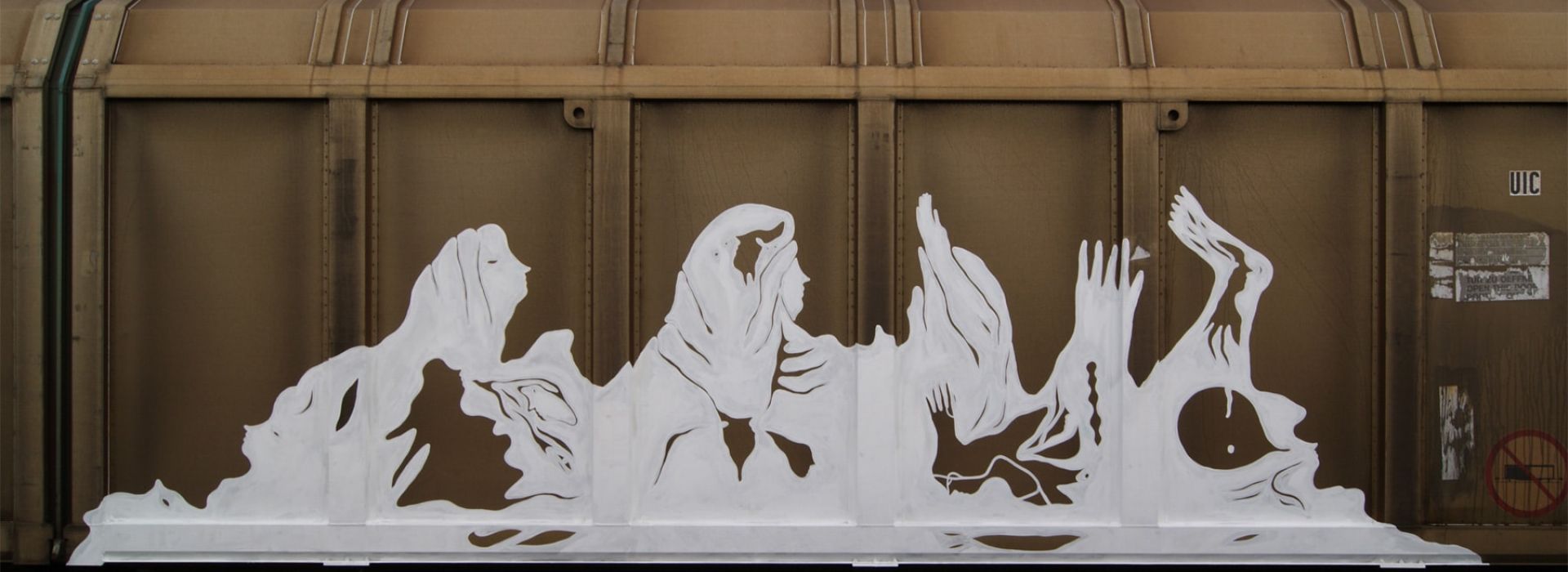

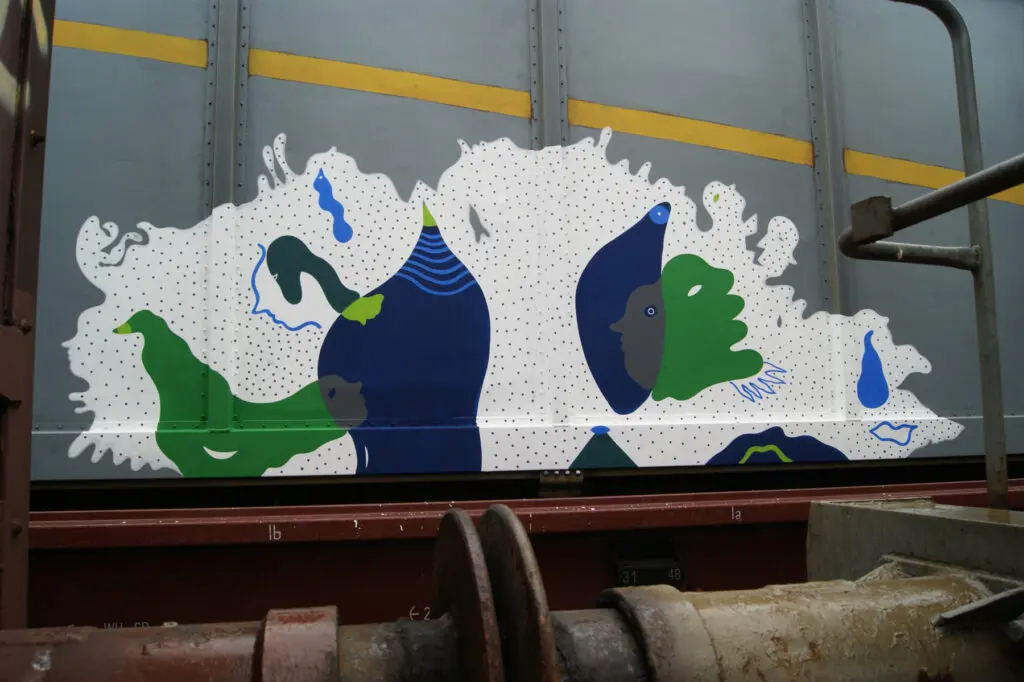
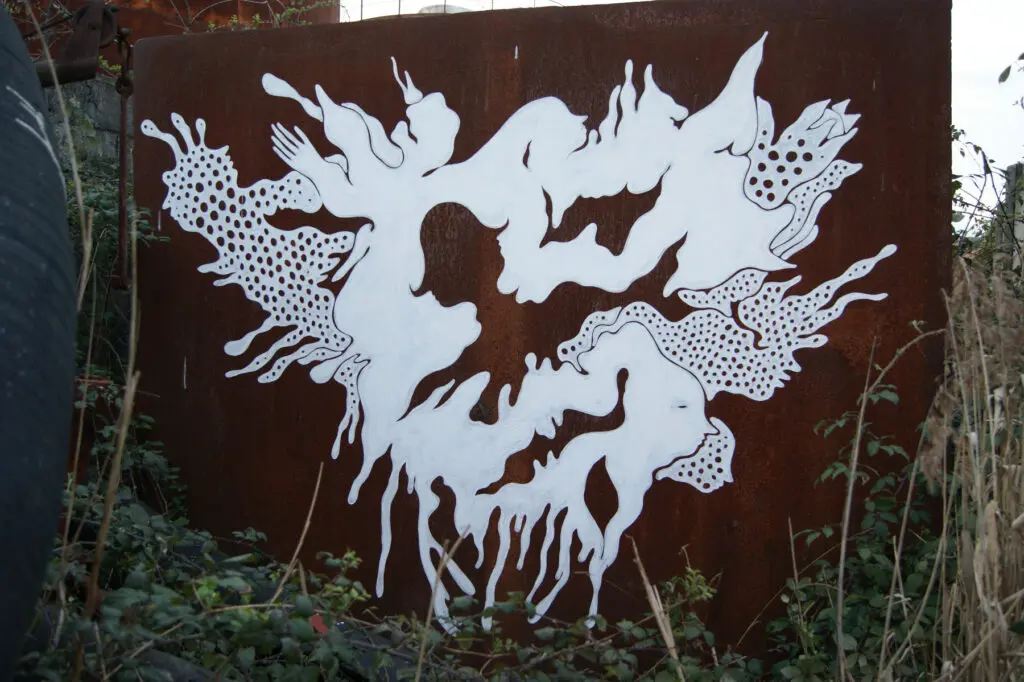
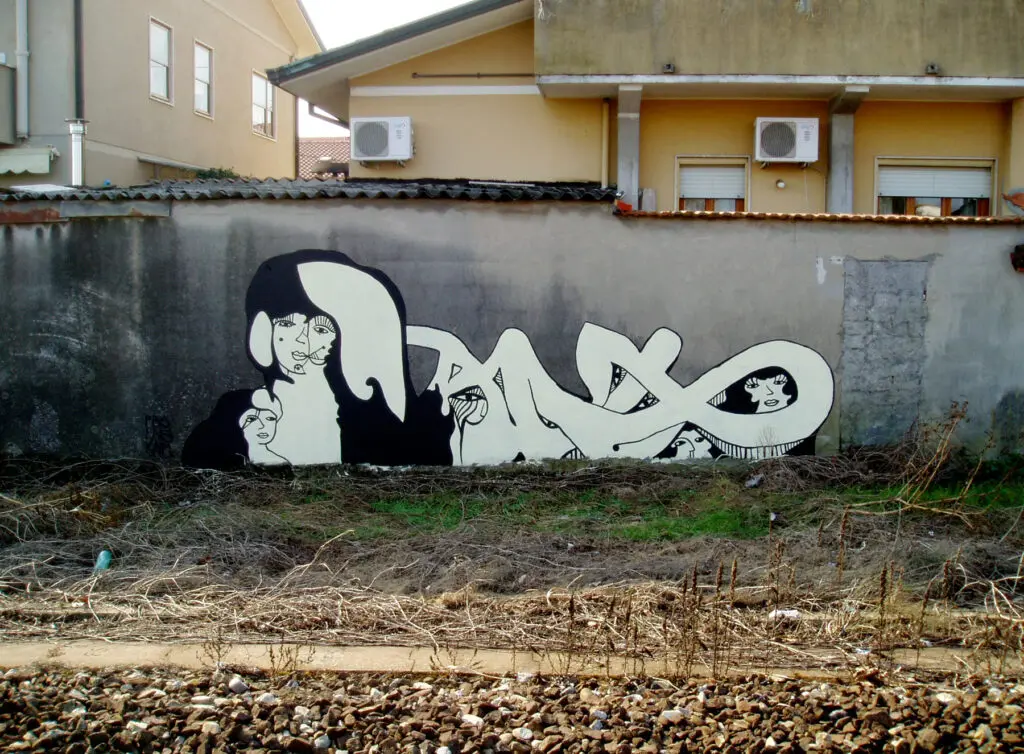
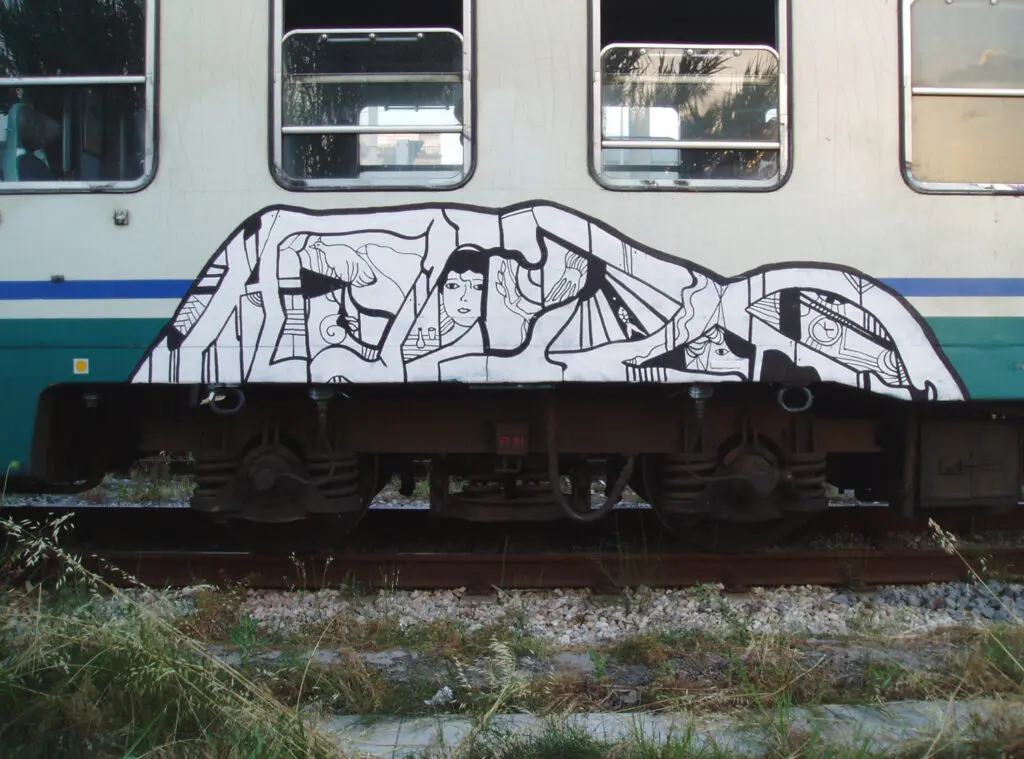
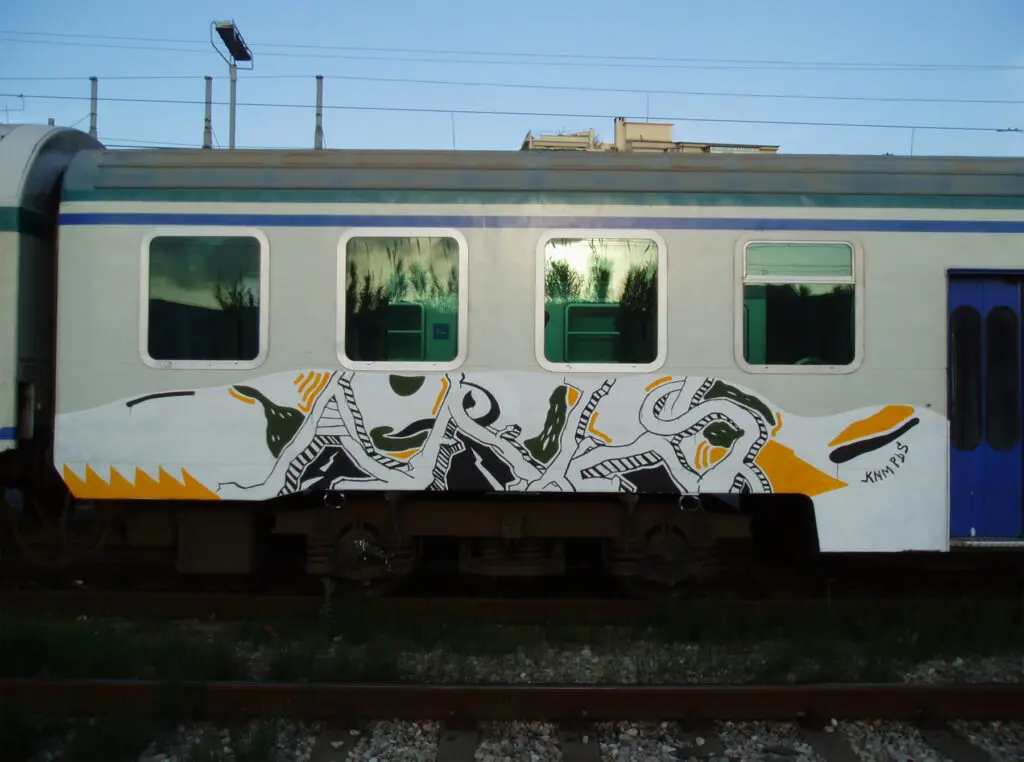
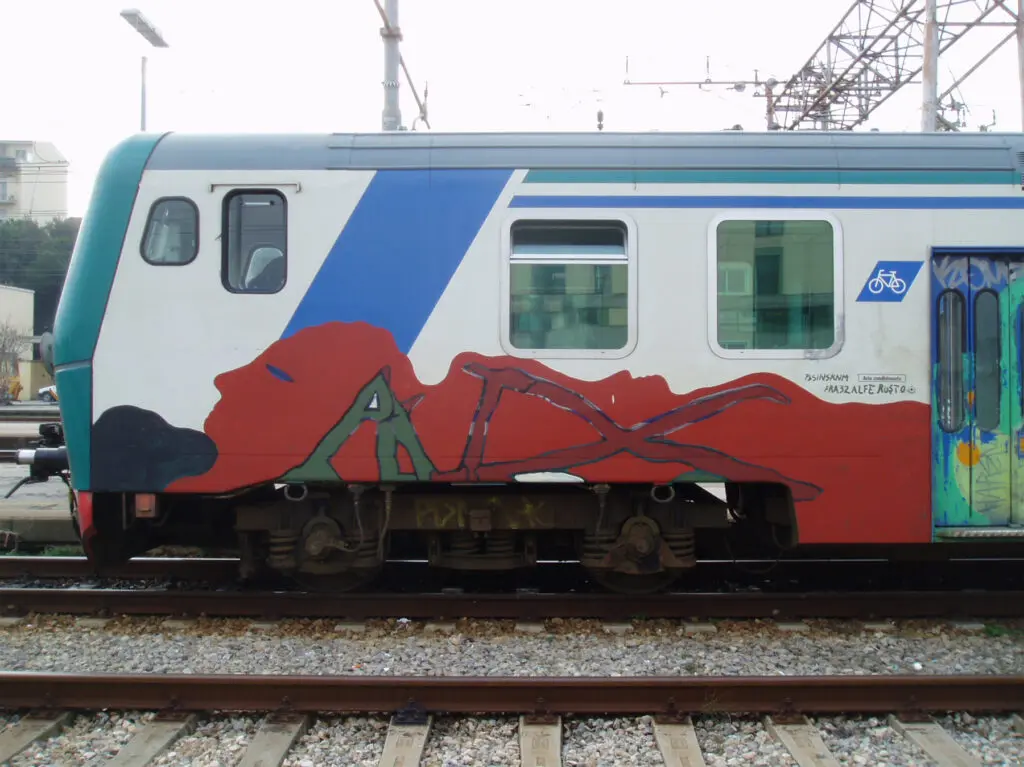
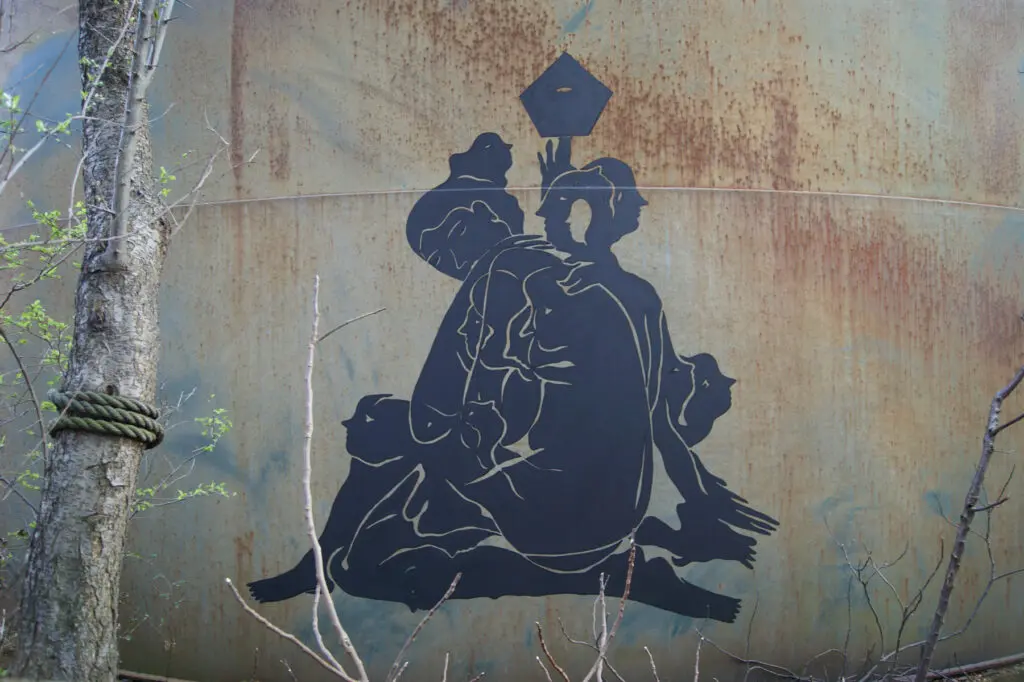
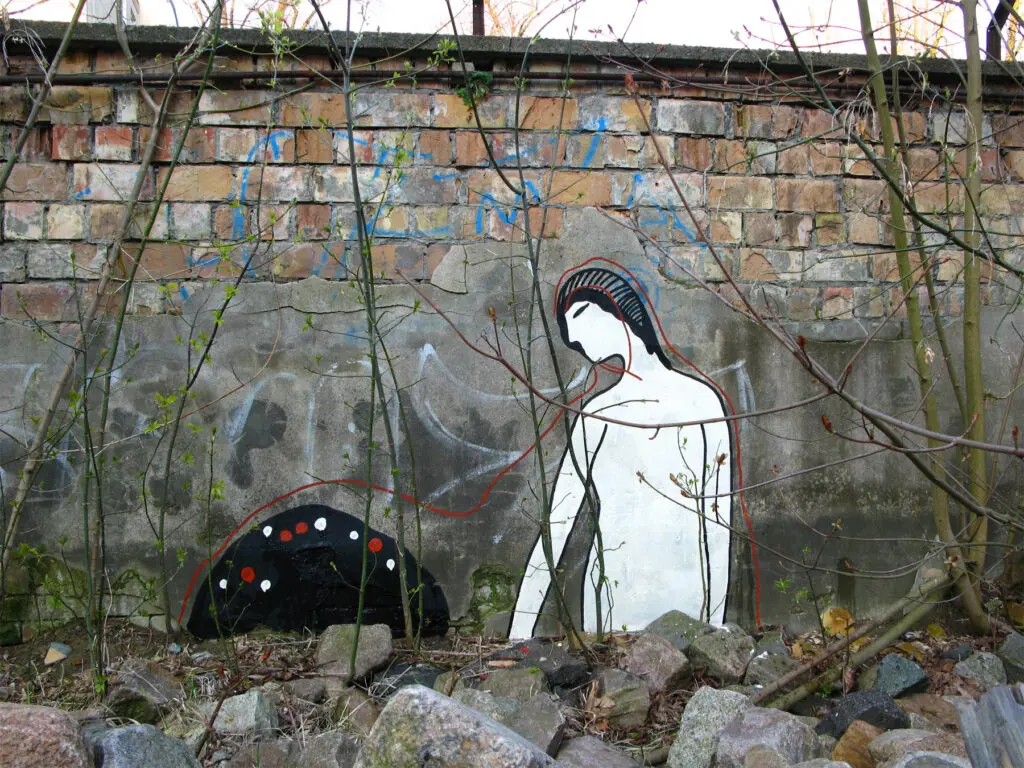
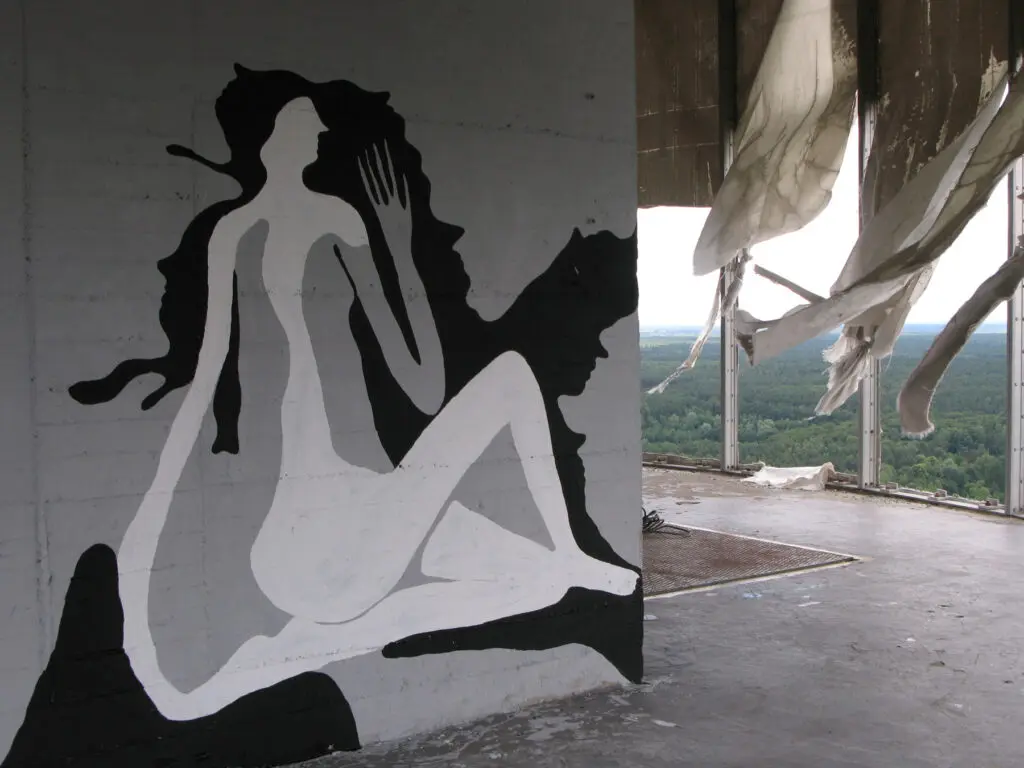
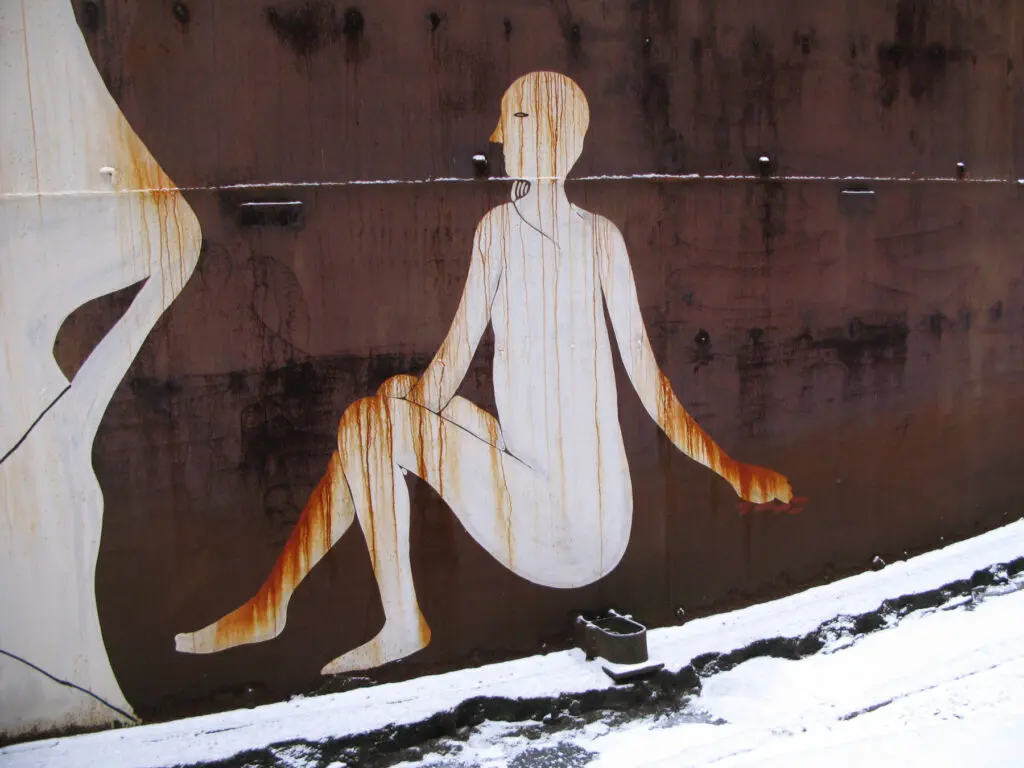
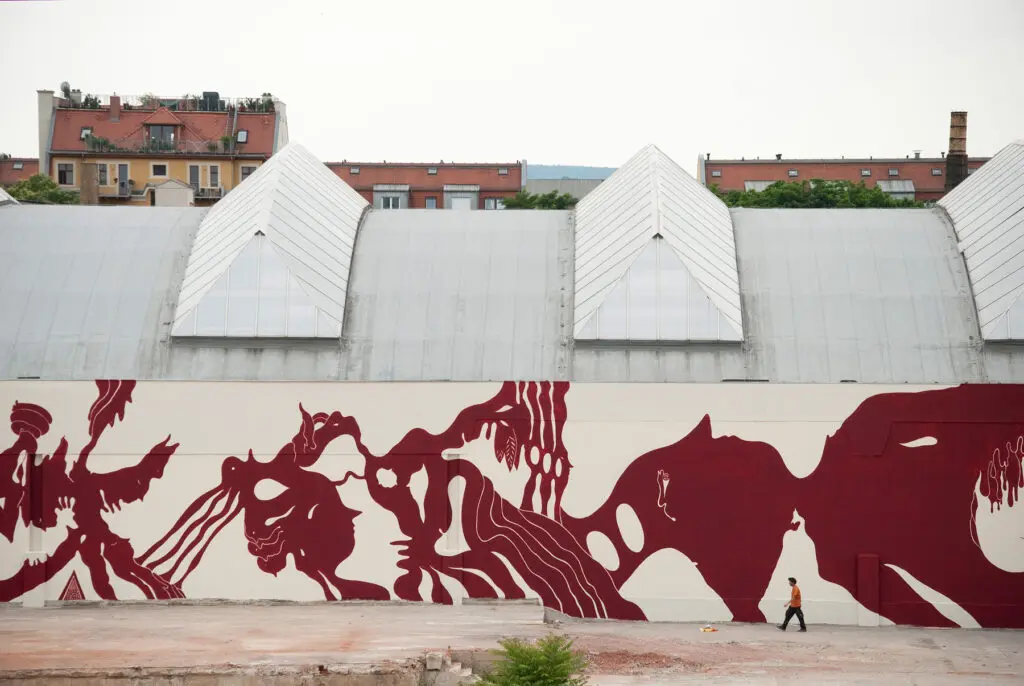
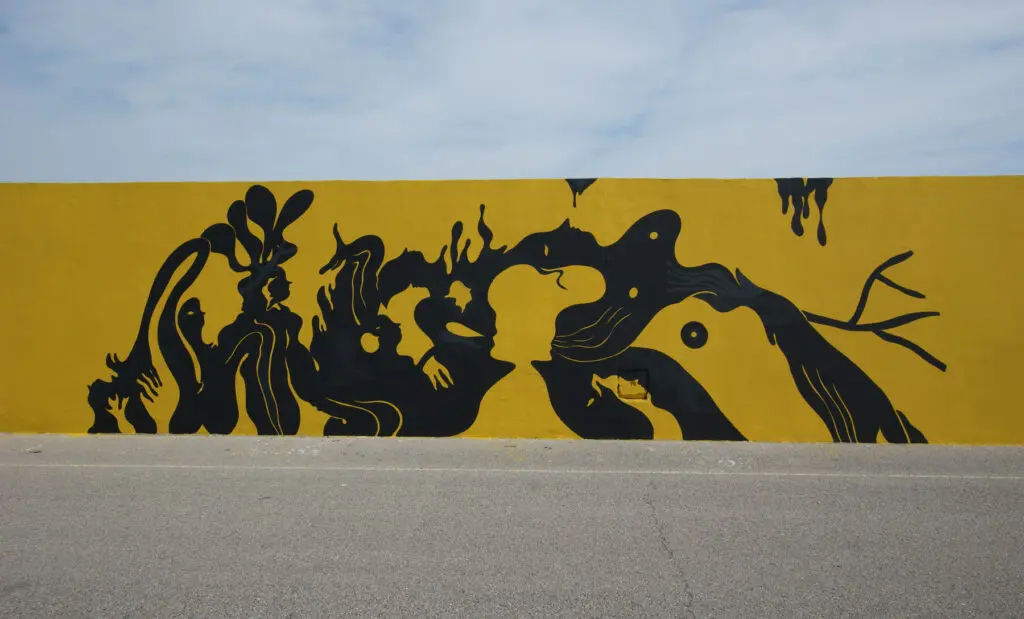
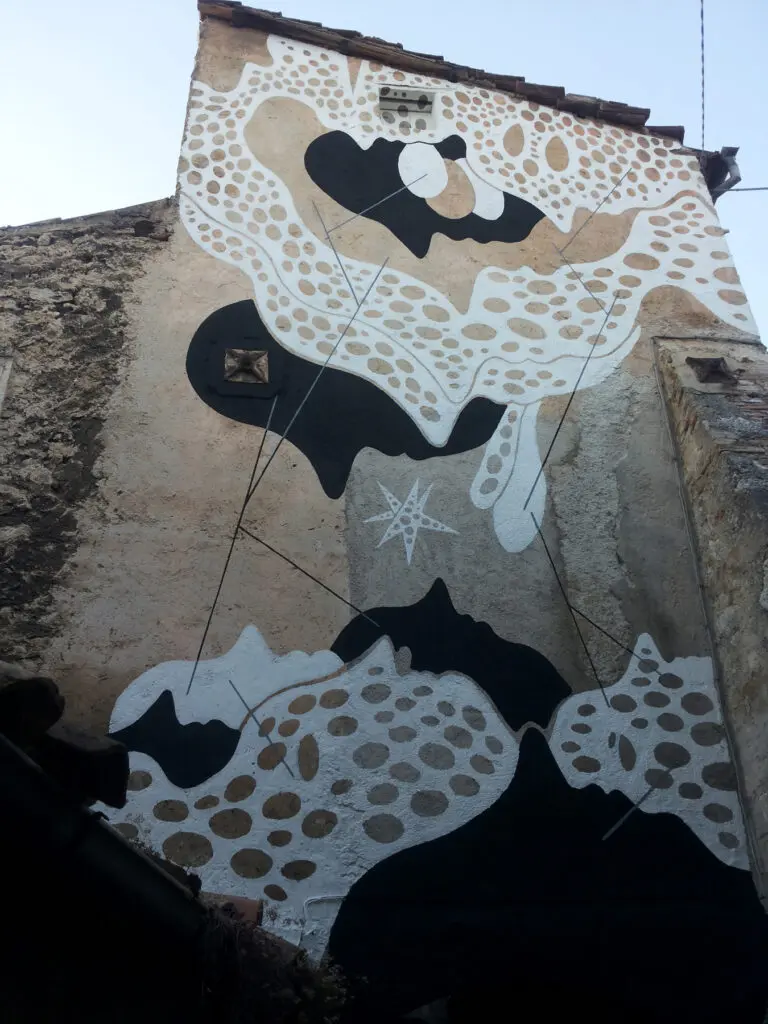
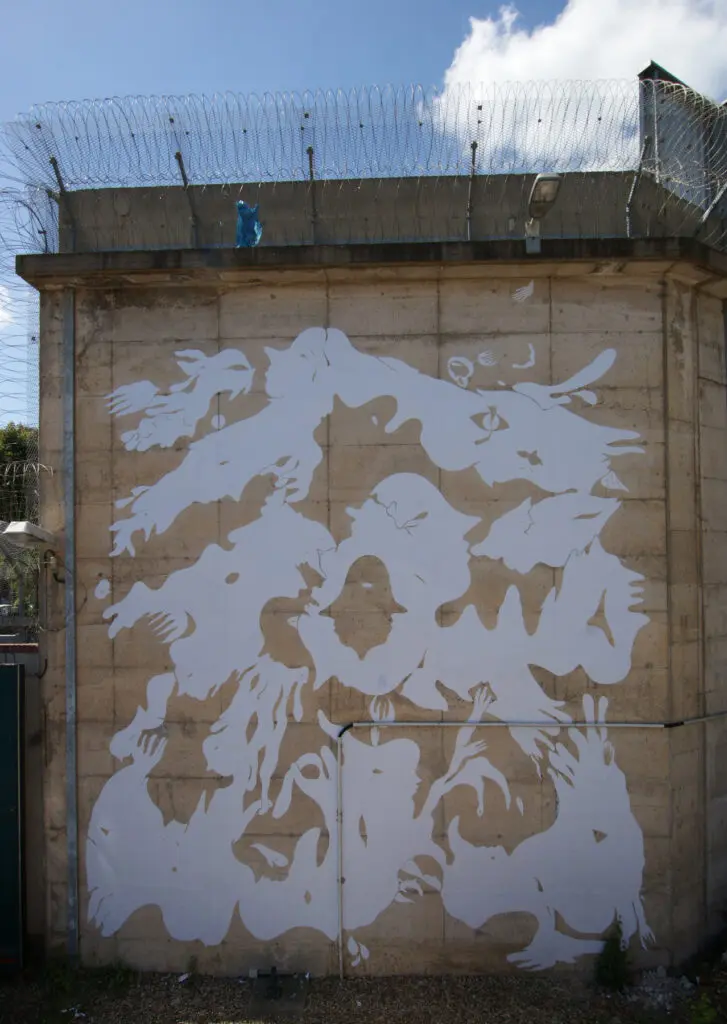
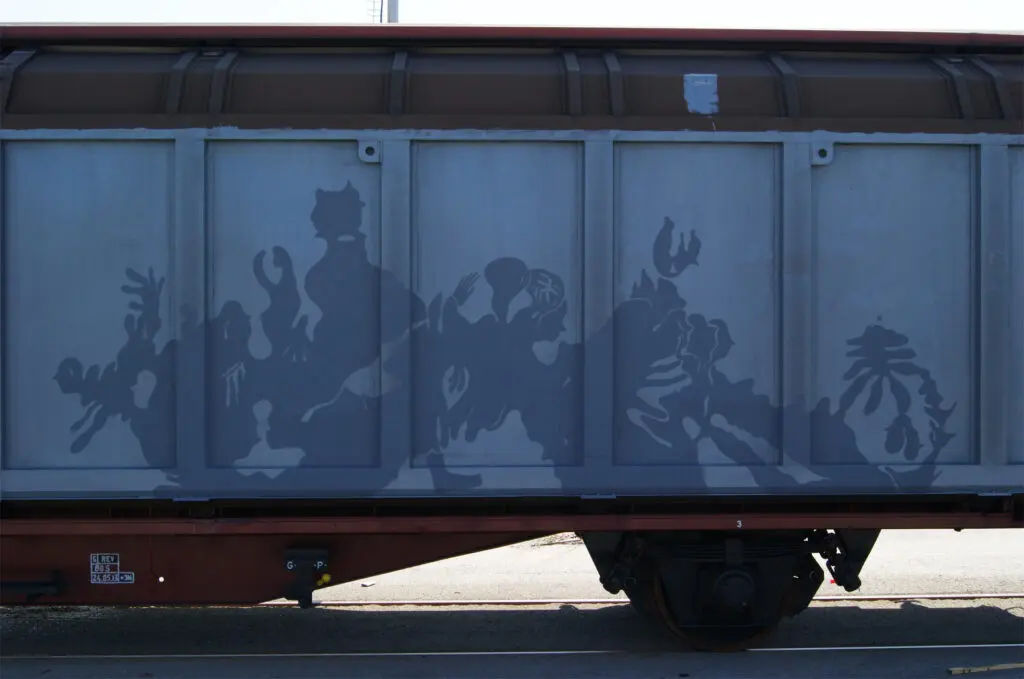
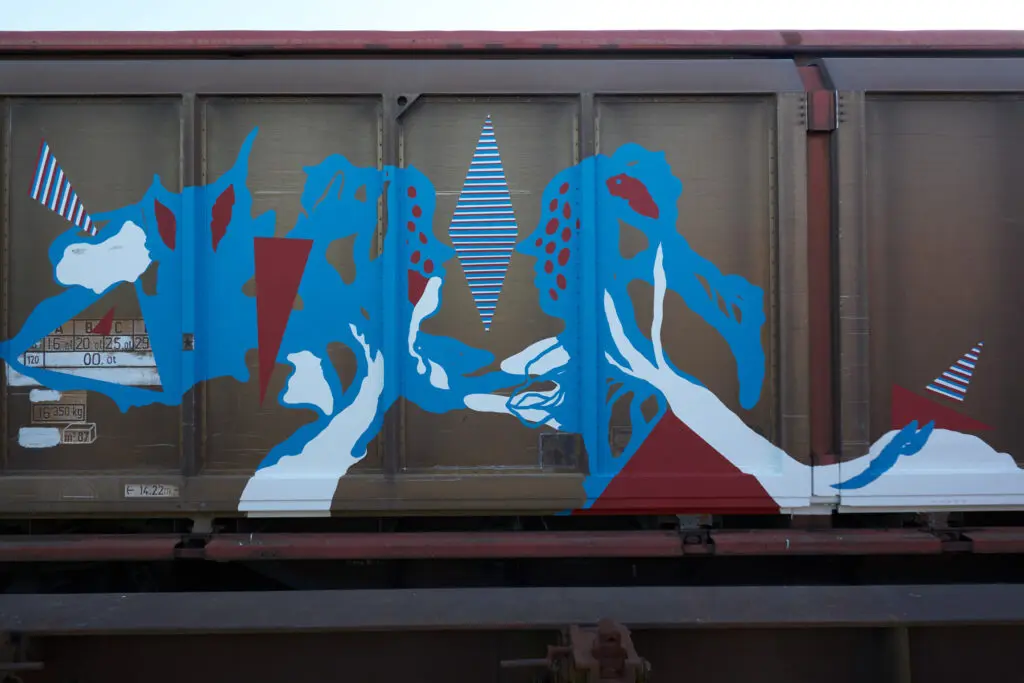
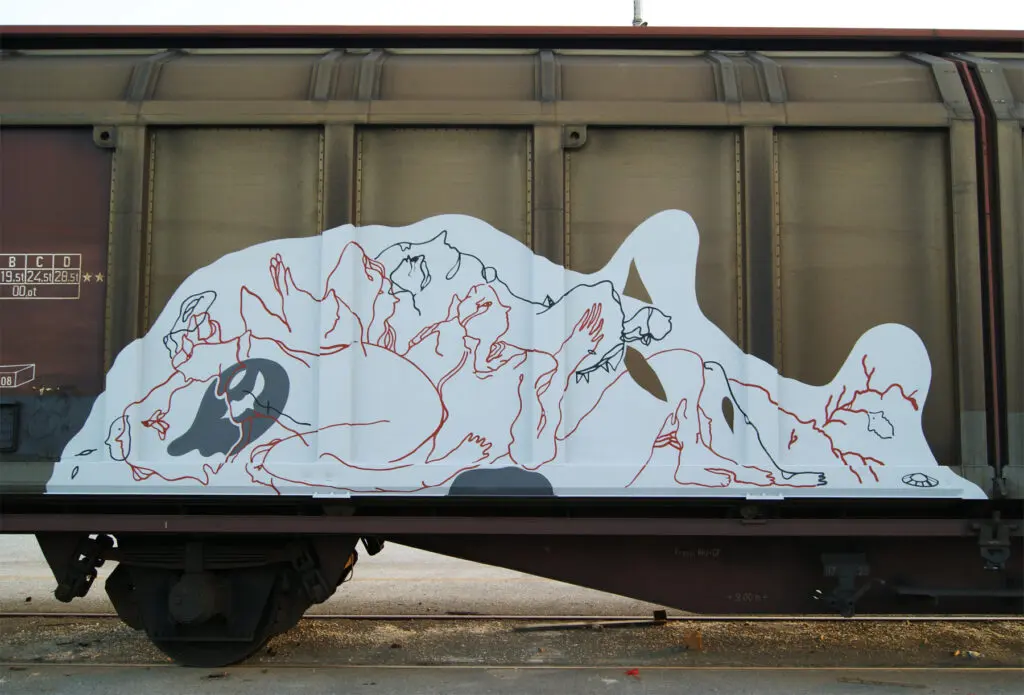
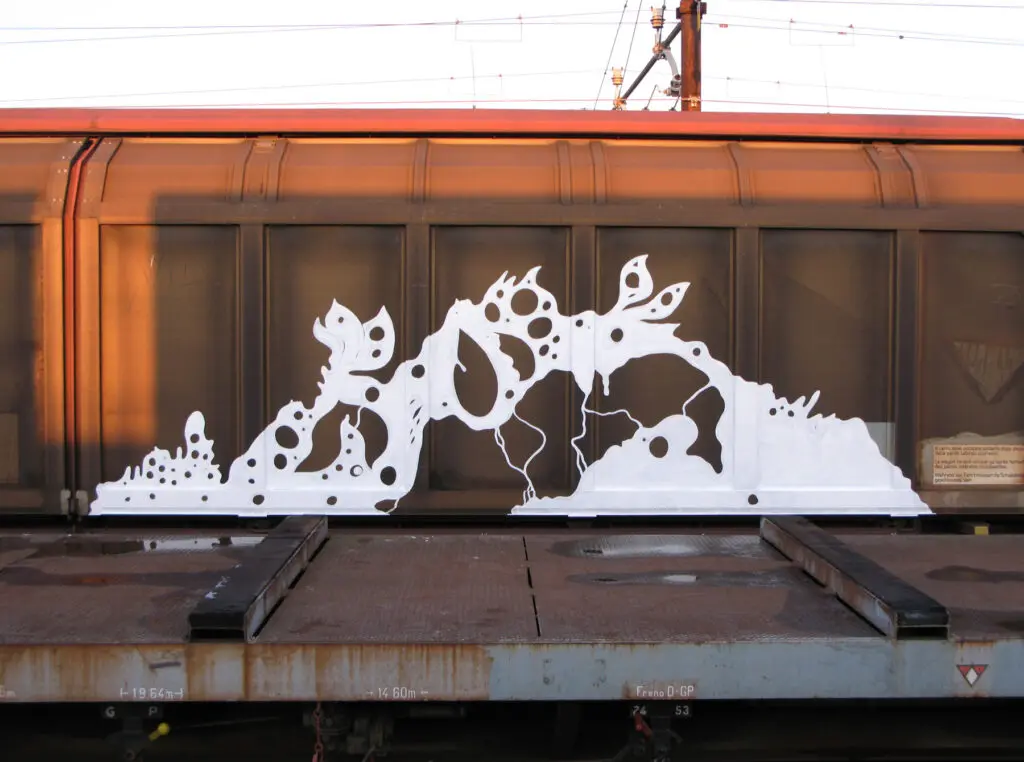
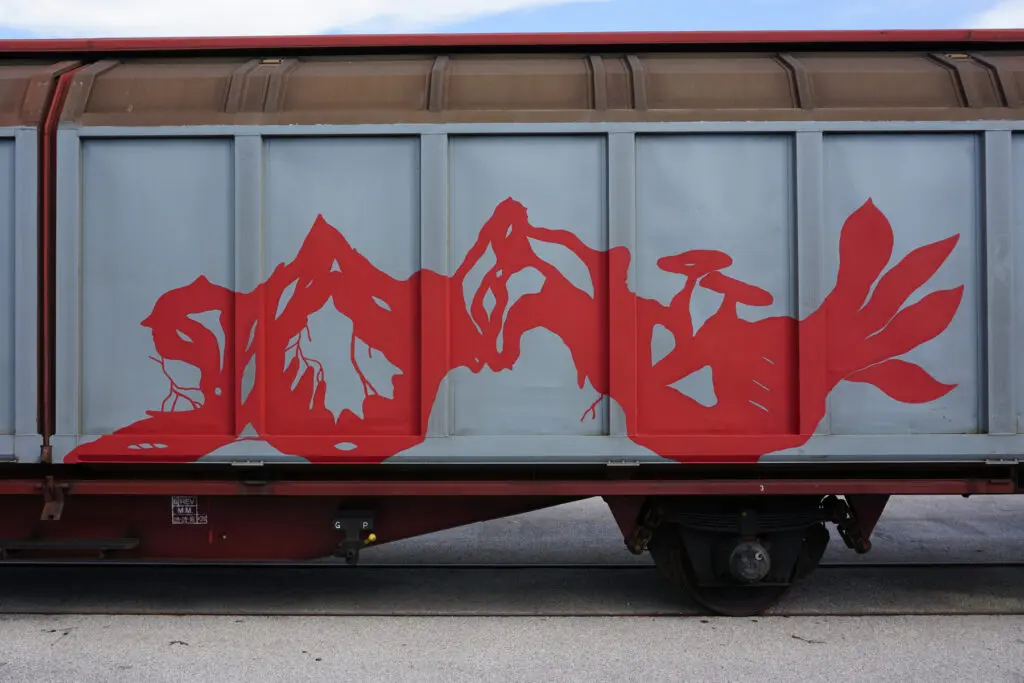
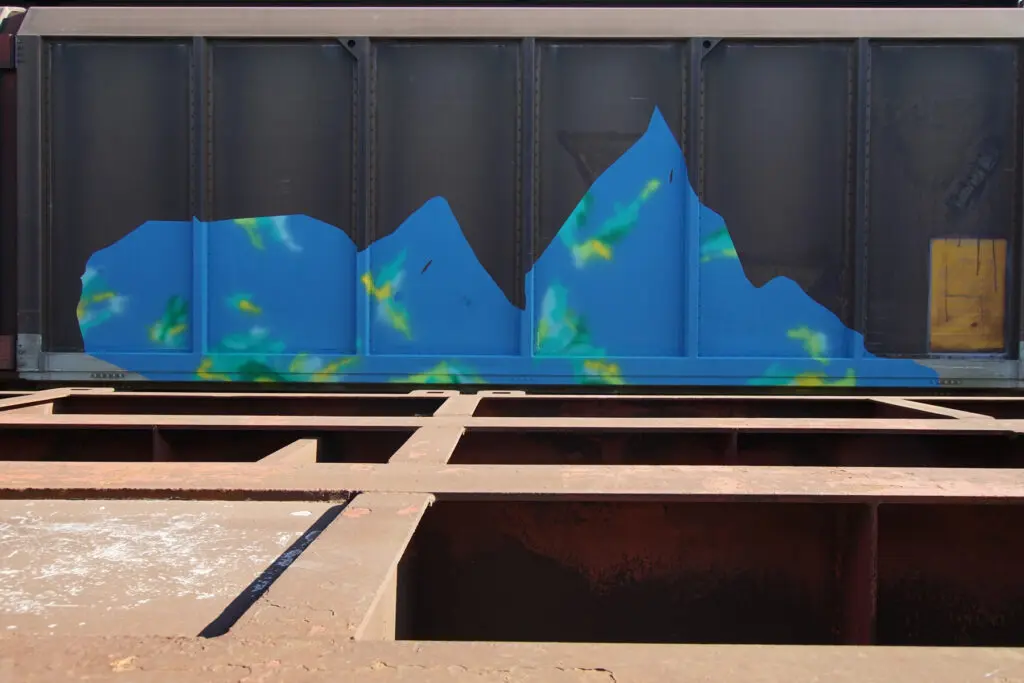
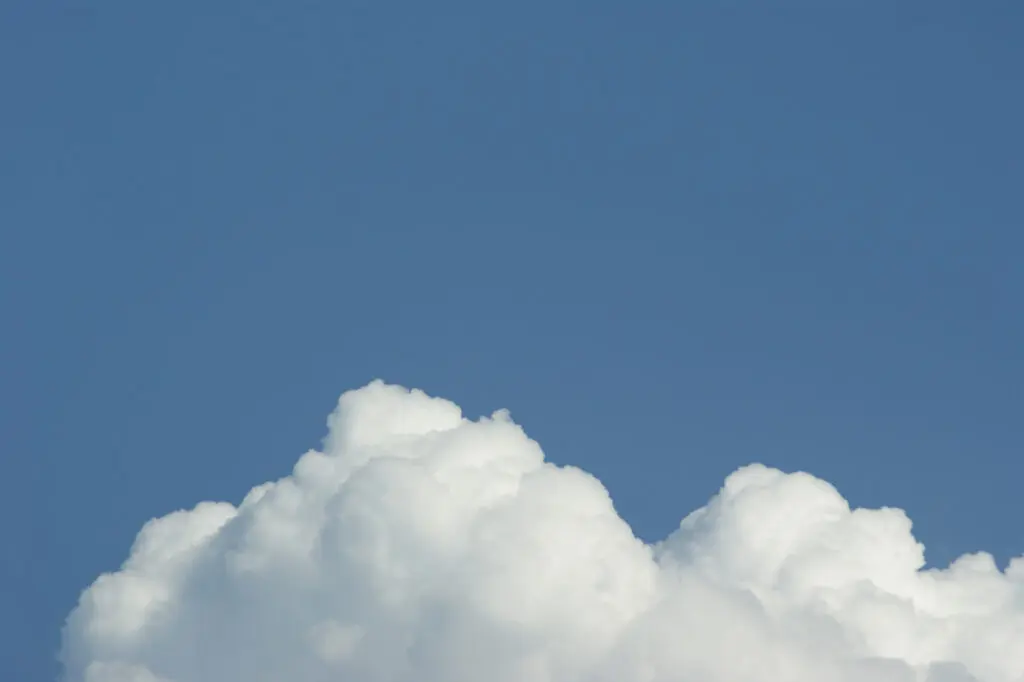
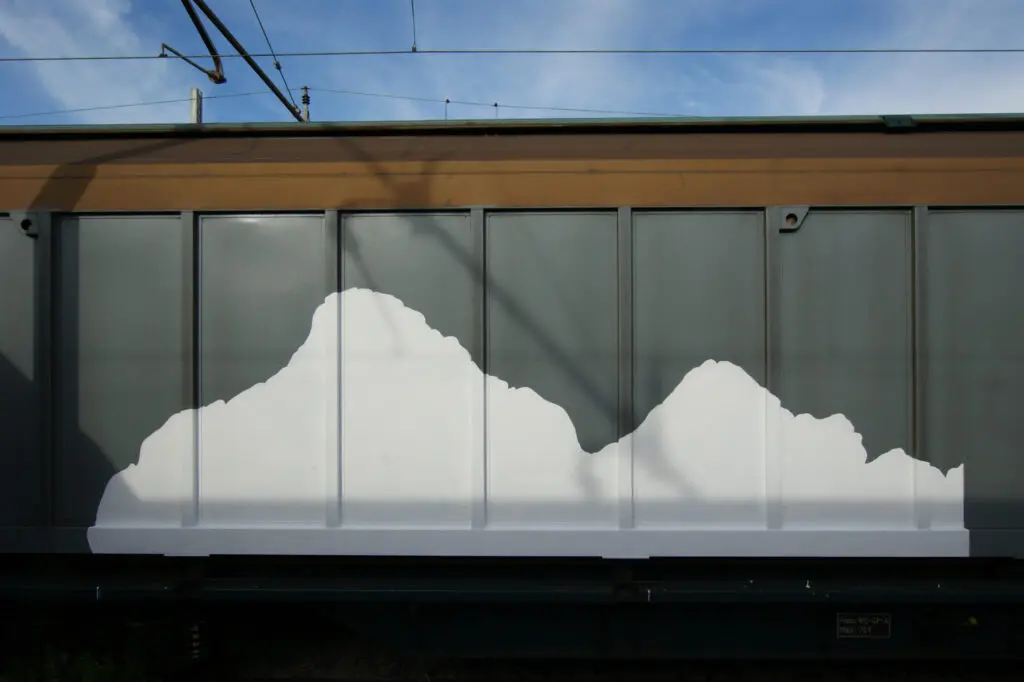
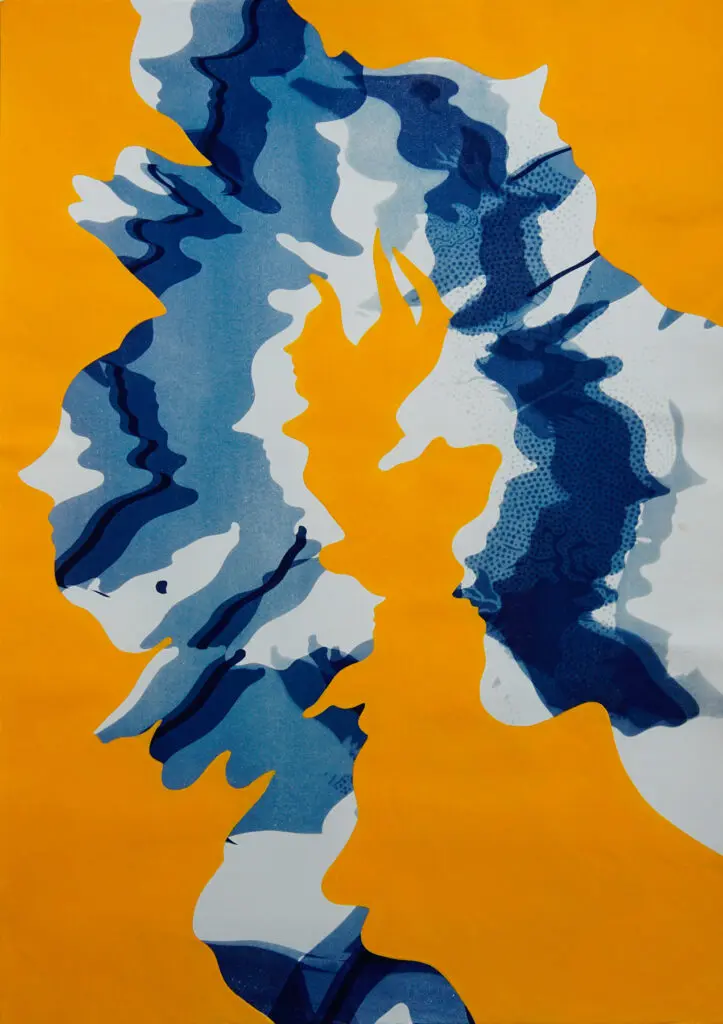
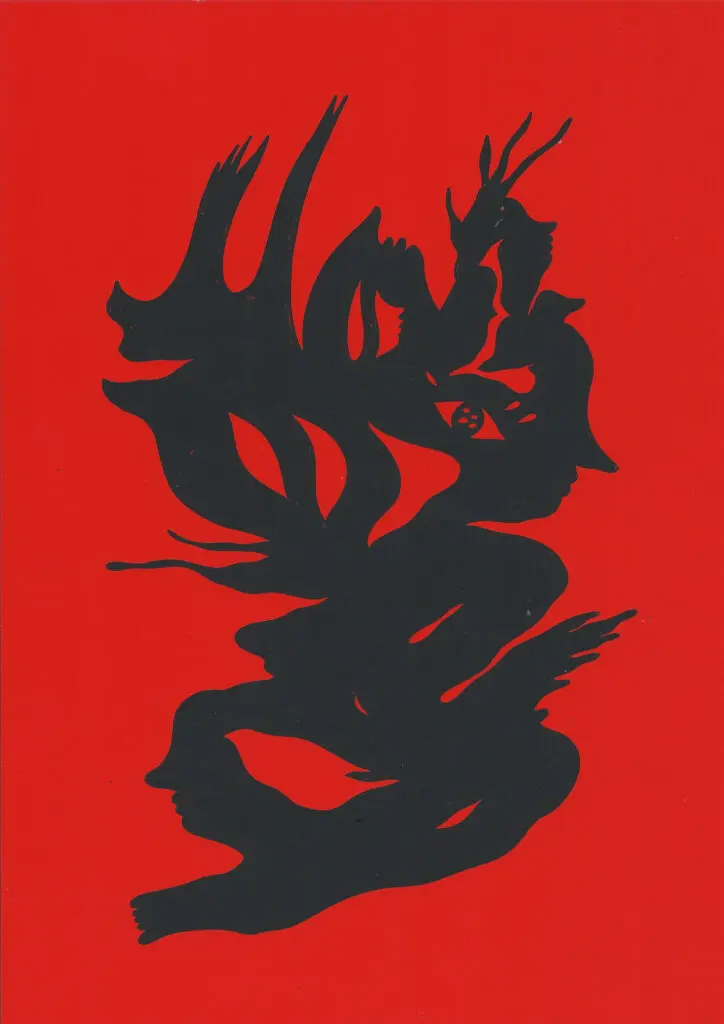
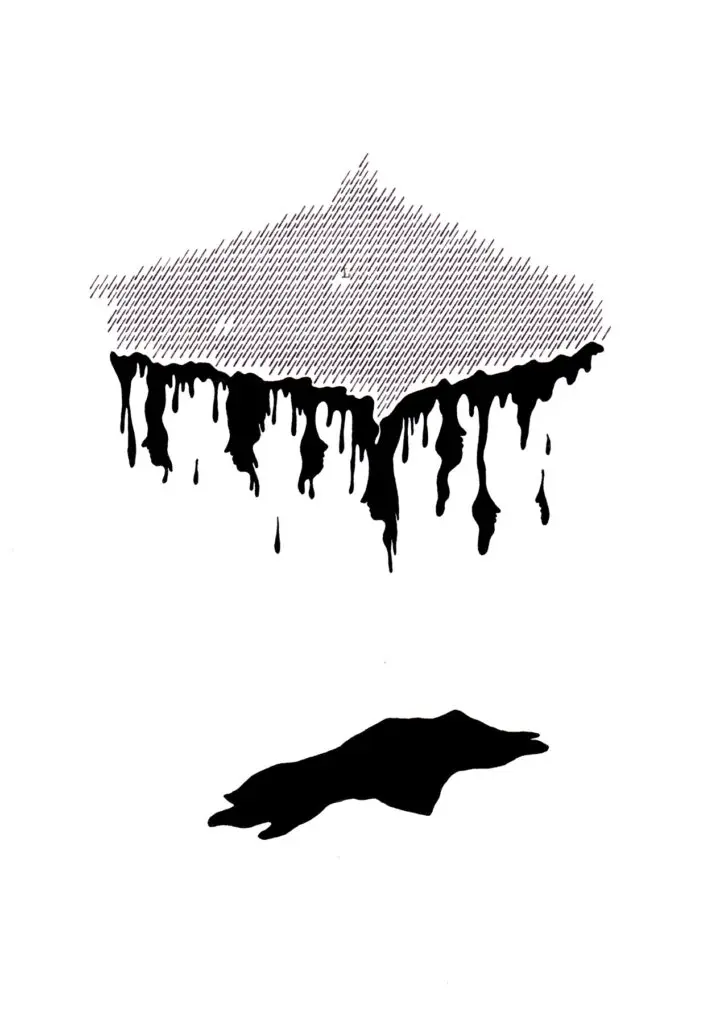
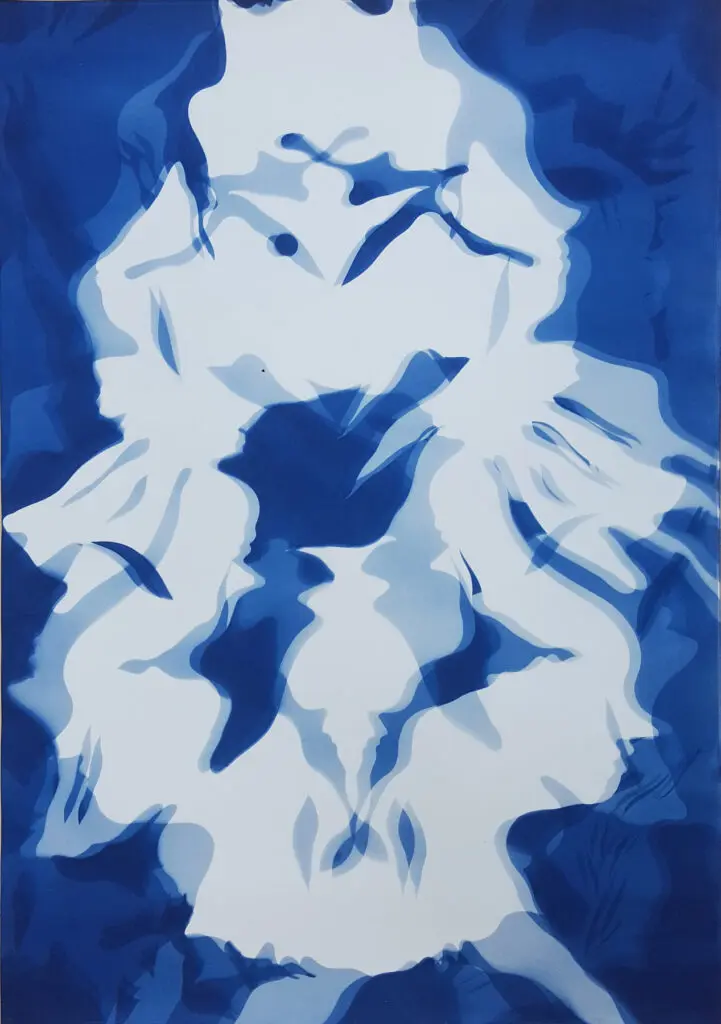
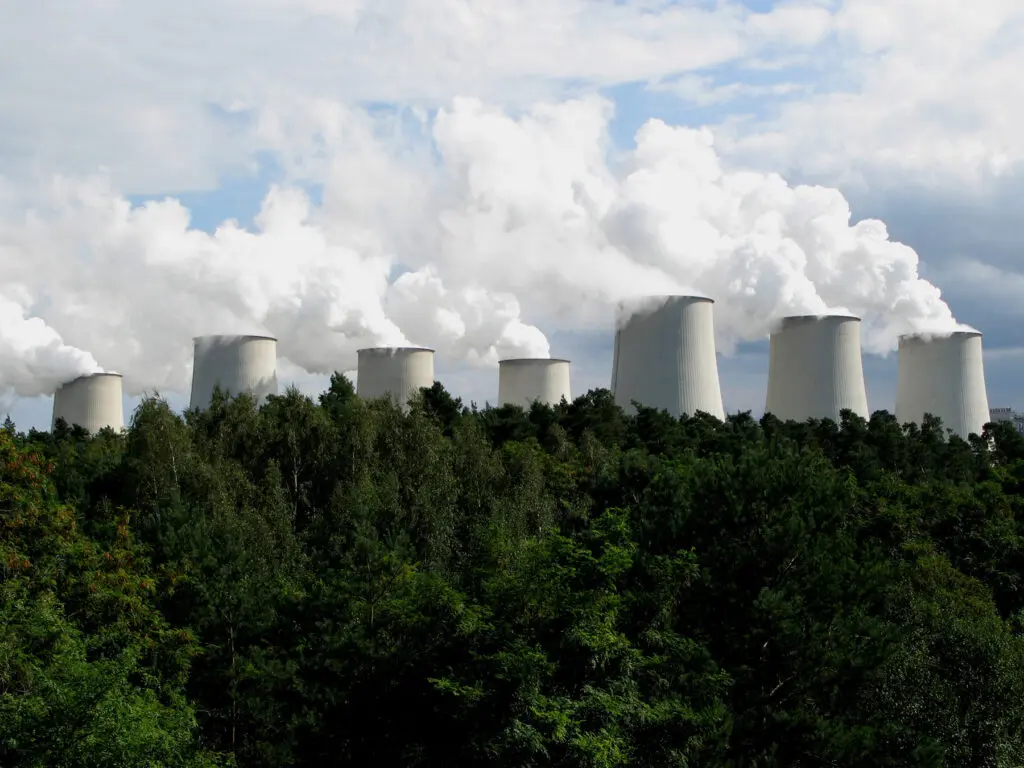
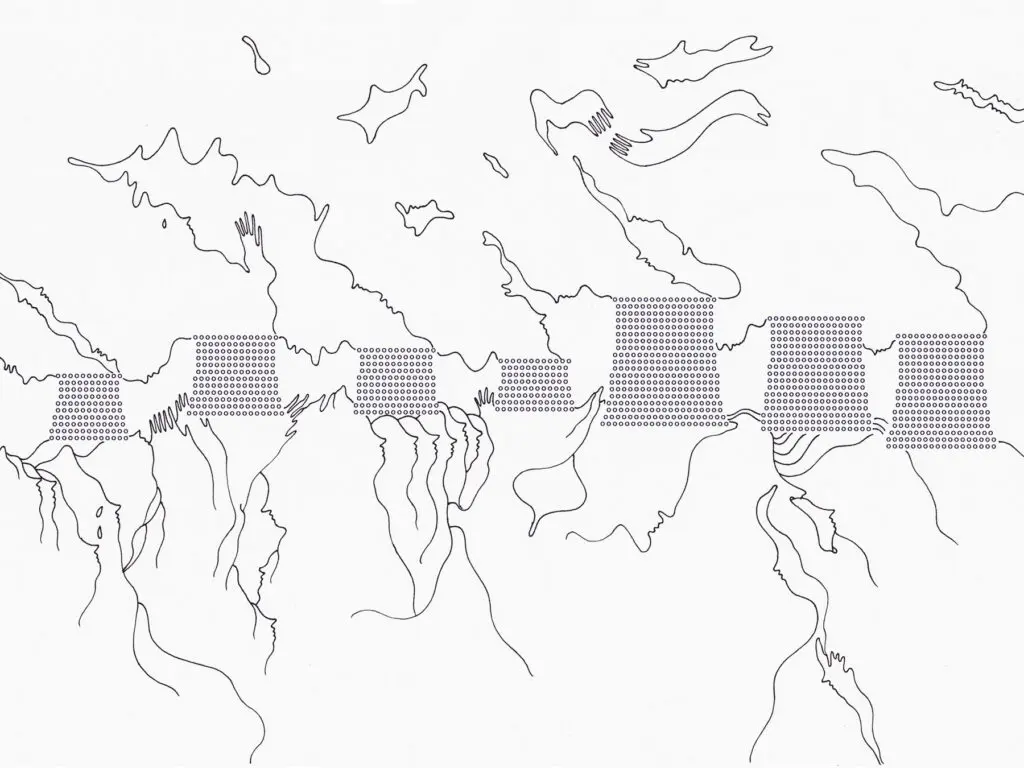
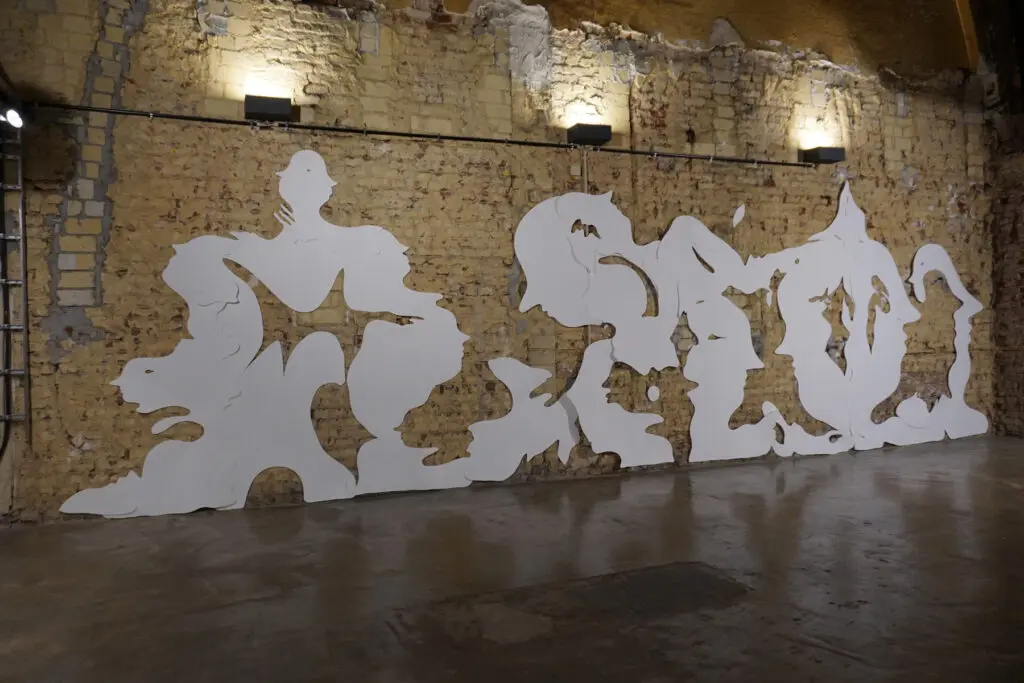
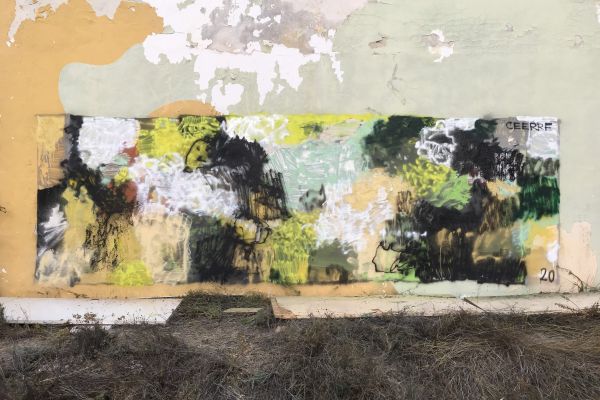
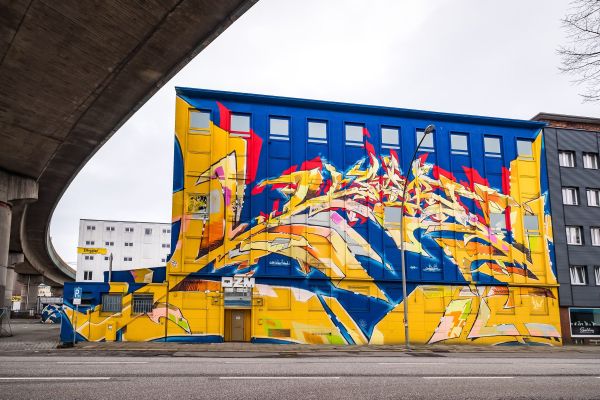
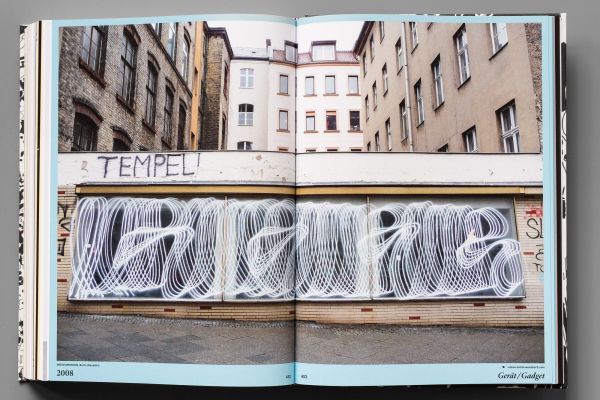
Leave a Reply